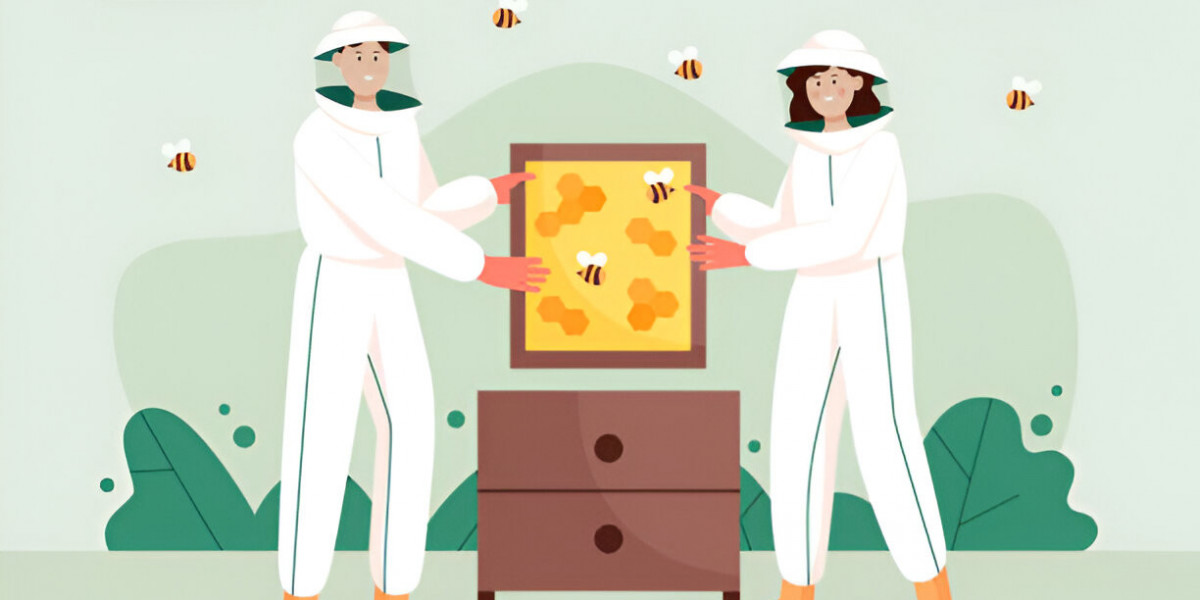Introduction: The Buzz Around Smart Beekeeping
Beekeeping has undergone a quiet revolution in recent years. What once relied purely on the instincts and eyes of experienced apiarists is now enhanced by the precision of modern technology. A Beehive Monitoring System helps beekeepers ensure the health, safety, and productivity of their colonies. With real-time insights provided by smart sensor technology, these systems are becoming essential in both commercial and hobbyist operations.
This comprehensive blog delves into the methods of beekeeping, explores how to monitor bee health using smart sensor technology, and offers effective tips to keep ants out of the beehive. Let’s dive into how innovation is transforming this age-old practice for the better.
1. What is a Beehive Monitoring System?
A Beehive Monitoring System is an integrated solution using IoT (Internet of Things) devices and sensor technologies to track key metrics inside a beehive. These metrics include:
Temperature and humidity levels
Hive weight (for nectar and honey production)
Sound frequencies (to detect queenlessness or swarming)
Bee activity levels
Intrusion alerts (like ant attacks or predators)
Modern systems like GoBuzzr provide remote access to hive data through mobile apps or cloud platforms. This allows beekeepers to intervene quickly when abnormalities are detected.
2. Benefits of Using a Beehive Monitoring System
a. Improved Bee Health:
Monitoring internal conditions like temperature and humidity helps maintain optimal living conditions for bees.
b. Early Warning System:
Unusual noise patterns or sudden changes in hive weight can indicate swarming, queen death, or disease, giving beekeepers a timely heads-up.
c. Efficient Hive Management:
Real-time data minimizes unnecessary hive openings, reducing stress on the bees and saving time for the beekeeper.
d. Increased Honey Yield:
By better understanding hive activity and timing, beekeepers can maximize nectar harvesting and optimize honey extraction cycles.
e. Predictive Analysis for Disease:
Data gathered over time helps in identifying disease trends and planning preemptive treatments.
3. Effective Tips to Keep Ants Out of the Beehive
One of the common threats to beehives, especially in tropical regions, is ant infestation. Ants attack beehives for food whether it’s honey, brood, or dead bees.
Here are some effective tips to keep ants out of the beehive:
a. Use Ant Moats
Create a water barrier around hive legs. Use tin cans or cups filled with water or oil around each hive stand leg to stop ants from climbing up.
b. Apply Diatomaceous Earth
Sprinkling food-grade diatomaceous earth around the base of the hive stand can act as a desiccant that kills ants upon contact.
c. Vaseline or Grease Barriers
Coat the hive stand legs with Vaseline or a grease band to make them slippery for ants.
d. Maintain Clean Surroundings
Remove fallen combs, sugar syrup spills, or dead bees around the hive, which can attract ants.
e. Use Ant-Repellent Plants
Plant natural repellents like mint, neem, or turmeric near the apiary site.
f. Elevate and Isolate
Keep your hive elevated off the ground on stands and away from trees or walls that ants might use as a bridge.
g. Monitor Regularly
With sensor alerts, some beehive monitoring systems can even notify you of excessive movement or vibration, which might indicate an external pest attack, including ants.
4. Methods of Beekeeping: Traditional to Tech-Driven
a. Traditional Beekeeping (Fixed-Comb)
Utilizes clay pots, logs, or boxes without movable frames.
Honey harvesting is destructive, often damaging the colony.
b. Modern Beekeeping (Movable Frame Hives)
Introduced by L.L. Langstroth, this method uses frames that can be moved and reused.
More sustainable and less disruptive.
c. Urban Beekeeping
Practiced in city rooftops, balconies, or small backyard spaces.
Requires more vigilance due to urban pollution and limited flora.
d. Organic Beekeeping
Avoids synthetic chemicals or treatments.
Encourages natural comb building, organic feeding, and integrated pest management.
e. Smart Beekeeping (Tech-Enhanced)
Combines traditional practices with digital insights.
Uses beehive monitoring systems, GPS, AI-driven analysis, and real-time alerts.
Advantages of Smart Beekeeping:
Improves colony survival during winter
Optimizes queen breeding cycles
Supports remote hive locations
Enhances swarm prevention strategies
5. Monitoring Bee Health by Smart Sensor Technology
Smart sensor technology is the heart of an effective beehive monitoring system. Monitoring Bee Health by Smart Sensor Technology It enables non-invasive, continuous, and accurate observation of colony health.
Types of Sensors Used:
a. Temperature & Humidity Sensors
Bees maintain a narrow temperature range (34–35°C) inside the brood area.
Sudden drops can indicate queen absence or disease.
b. Sound/Vibration Sensors
Analyses bee buzzing frequency.
Different buzz patterns signify stress, aggression, or readiness to swarm.
c. Weight Sensors
Tracks the weight of the hive to estimate nectar inflow and honey production.
d. Infrared/Camera Sensors
Monitor bee traffic at the entrance.
Helps estimate population trends and detect robbing or intrusions.
e. Gas Sensors (CO2 & VOCs)
Elevated CO2 levels could suggest overcrowding or poor ventilation.
Real-Time Health Insights with GoBuzzr
GoBuzzr integrates multiple sensors and displays all hive data via an intuitive dashboard. Whether it’s identifying anomalies or automating pest control alerts, GoBuzzr ensures that your bees stay safe, productive, and stress-free.
6. Why Beehive Monitoring Matters in 2025 and Beyond
a. Climate Change Impact
With erratic weather patterns, traditional beekeeping is less reliable. A beehive monitoring system ensures the hive stays within ideal ranges despite external conditions.
b. Colony Collapse Disorder (CCD)
Sensor data helps pinpoint early indicators of CCD like queen failure, forager loss, or parasite stress.
c. Reduced Manual Intervention
Fewer hive inspections mean less disturbance, reducing the chances of stress or accidental queen damage.
d. Data for Research and Innovation
The data collected can also aid agricultural researchers in pollination forecasting and ecosystem health studies.
7. Getting Started with Beehive Monitoring
If you’re new to tech-enabled beekeeping, here are steps to integrate a system like GoBuzzr into your hive management routine:
Select the Right Monitoring Kit – Choose one based on your hive size, number of hives, and environment.
Install Sensors Safely – Position sensors in brood areas and hive entrances.
Sync with the Mobile App – Use the GoBuzzr app to view dashboards and receive alerts.
Analyze and Act – Follow up on alerts and optimize hive conditions based on the metrics provided.
Maintain Regular Firmware Updates – Ensure your devices stay compatible with evolving data analysis models.
Conclusion: The Future of Beekeeping is Here
The fusion of tradition and technology is unlocking a new era of smart, sustainable apiculture. A Beehive Monitoring System not only ensures the well-being of bees but also empowers beekeepers with real-time decision-making tools. By integrating smart sensor technology, embracing modern methods of beekeeping, and implementing effective tips to keep ants out of the beehive, we can safeguard pollinators and ensure environmental resilience.








